They ask, innocently enough, if I tasted any good scotch while I was in Scotland. And I answer, with a bit of spite – I have no idea.
On my second morning in Glasgow I wake up with a horrendous head cold – likely something I picked up before leaving the States, incubated on the red-eye to London, and further irritated by the persistent cold, wet weather that comes as a standard of living during the winter months in the UK. Up until that second morning, everything had gone smoothly – no hiccups with travels or customs, getting a few upgrades and early check-ins along the way, and realizing the only thing I had forgotten to pack was a belt – so it would figure that something had to wreck the good fortune.
I dig into the emergency stash of DayQuil hidden in the bottom of my dop kit and we get on the commuter train to Edinburgh – there’s a long day ahead of us.
Being a tall, lanky, pale man with bright red hair, I belong in a place like Scotland or Ireland. A year ago I spit into a tube and the results were a map dividing my lineage equally between the two main British Isles – my father’s side from Scotland and England, my mother horribly Irish Catholic. I always hear stories about how others get their DNA tested and they get a surprise somewhere hiding in the outlying 10% of their genetic makeup – a foreign infusion from someone who was visiting for a fun weekend or maybe an ill-fated night with an invasionary force. But here you are, a fraction of your makeup comes from a country you can’t pronounce because it, largely, no longer exists.
I was envious of the trips my peers had taken to this old country, the endless digital albums of their visits to the Islay and the Highlands, the white malthouses and copper stills contrasting against the rich green hills rolling out under the hazy grey skies. Lingering in the background is the local driver they had booked for the day to take them from one tasting room to the next, a cigarette burning between his fingers, the trademark Scottish scowl dragging his lips low.
Yes, I wanted to go. I had the genetic right to see what this land was all about! I wanted my own pictures of copper stills and peat fields! I wanted to nurse my own hangovers and wash the taste of smoky, peated belches from my mouth with imported Italian espresso and a quick bite of the gastronomic atrocity known as “toasties” seemingly available at every cafe.
Damned if I can’t taste or smell a thing, I’ll be getting Scotch in me one way or another. Furthermore, I wanted something I had never heard of, never tasted, and likely would never taste again. I love the strong flavors – black coffee, rich Merlots, Stout beers and single malt bourbons – and Scotch fit the bill. My first bottle of Scotch was a gift from a former boss – a parting gift. He slid the bottle of Bowmore 10 year across his desk with the news that my position was being terminated. Fortunately, the severance package included much more than the bottle of Scotch. Beyond the Bowmore, what shows up Stateside on the shelves feels limited, lacking – there is always the Laphroaig or the Lagavulin and the Macallan – all of them marked up comfortably out of reach of a Tuesday night cocktail.
For a moment, I’d like to bathe in the stuff.
The train to Edinburgh terminates in the middle of the old city and residents disembark to their jobs waiting tables and balancing bank ledgers and leading tours and adjusting insurance. We get in a cab and rack up a fare slogging along the morning traffic to the only distillery in Edinburgh, and likely the newest distillery in Scotland – if not the world.
The Port of Leith Distillery
Is it a curse? Perhaps. I have once again found a distillery tour that does not have their own whisky to serve. The first was Block Distilling, which opened a short walk from where I lived in Denver, who grew so tired of people asking when they would have whiskey they hung a countdown clock on the wall above a handful of barrels. The red numbers counted down and chipped away at a timeline of over three years. By then, we have moved to North Carolina.
Another time, I had organized a distillery quest through rural Kentucky with a collection of friends. Kentucky, bourbon, cocktails – what’s not to love? The circumstances around June 2021, however, put a pinch in the plans as tourism stifled in the face of the pandemic. Tours were limited, if given at all, and sold out weeks in advance. I had blindly booked a tour with a place called the Old Steelhouse Distillery outside Louisville. We drove for twenty minutes through tall cornfields before our GPS brought us to a collection of abandoned buildings. This was the distillery.
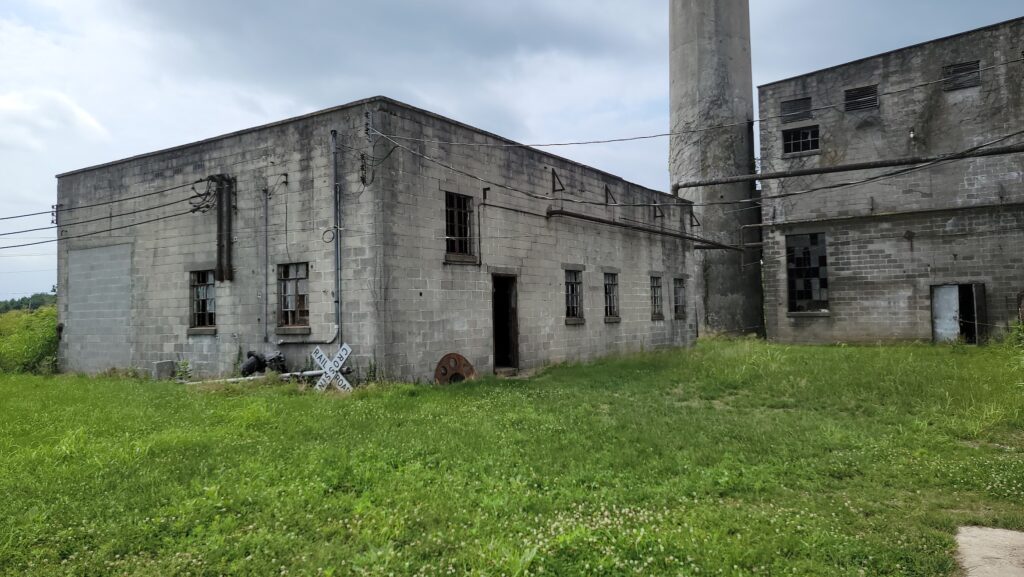
Rather, this was the former operations of TW Samuels Distilling – a site that ceased production in 1952 but had recently been acquired by a few ambitious, if not stupid, distillers who were gathering funds to fix up the place and get production going again. The tour took us through one dilapidated, stuffy building after another. Our guide pointed out spray paint and tape marks on the floor of where future rooms and bars would eventually stand. In some places were the original bottling lines and one room featured a collection of vintage glass bottles that had survived the years.

There was no whisky here, and there likely wouldn’t be for a few years. As of this writing, assuming they had all of their ducks in a row and distilled at a different location, they might just now be putting corks in bottles of Old Samuels bourbon – but I wouldn’t count on it.
That’s the thing about whiskey – you have to wait for it.
Port of Leith is a far cry from the rickety shacks of TW Samuel’s old haunts. Leith is perched atop six stories of brand-new factory facilities on the shores of the Edinburgh harbor. Brand new brand new, as in they were still experimenting with yeasts and fine-tuning their distillation process. Brand new, as in: no whisky to be had here, mates.
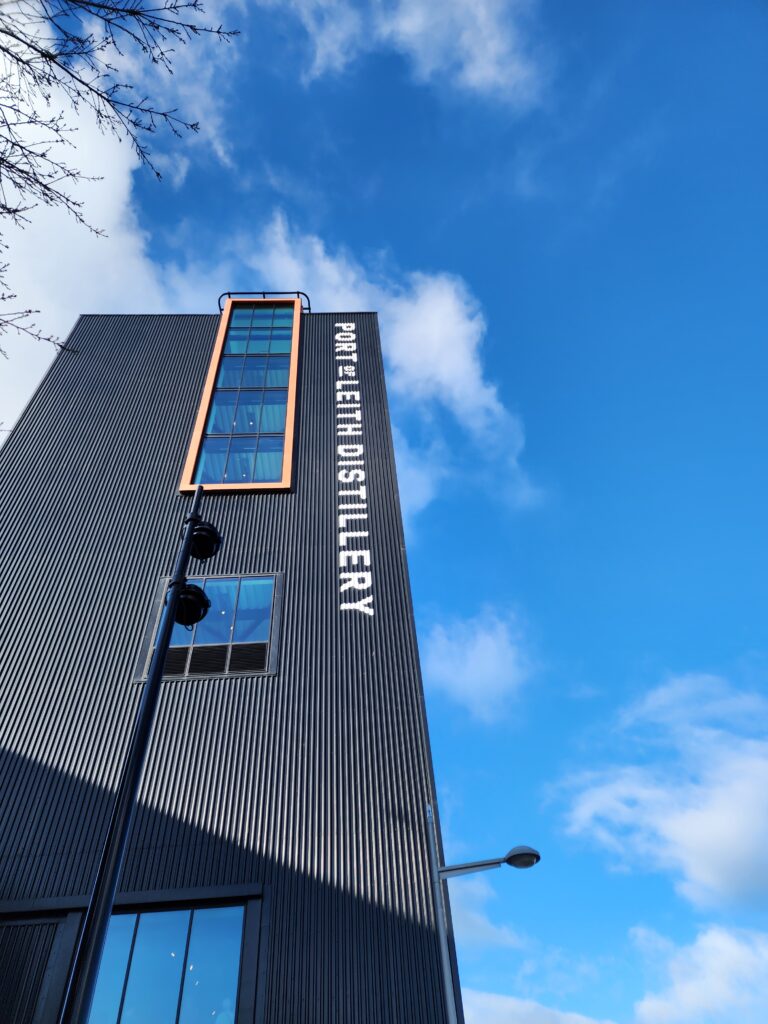
A true Kentucky Bourbon must age for at least two years in virgin, barrels of white oak – commonly charred on the inside before they are filled. American Whiskey, otherwise, has no minimum aging requirements unless you want to call it “straight whiskey,” in which it must sit for at least two years. In any case, producers are required indicate on their label if the alcohol is aged for anything less than four years. Buyer beware.
Scotch and Canadian whiskies (and Irish whiskeys) are a little more strict in their qualifiers – everything must age for a minimum of three years in a barrel. Any barrel. Go nuts.
The facility at Port of Leith had been open for maybe six months, which I can only assume is the approximate length of time our tour guide, Rocky, was legally allowed to drink1 . For the previous decade the owners meticulously scoured the planet for the right ingredients, yeast, wine barrels and, most importantly, financing, to make their idea come to life. The freshness of the operation is evident. Most of the machinery and kettles still have a shine to them.
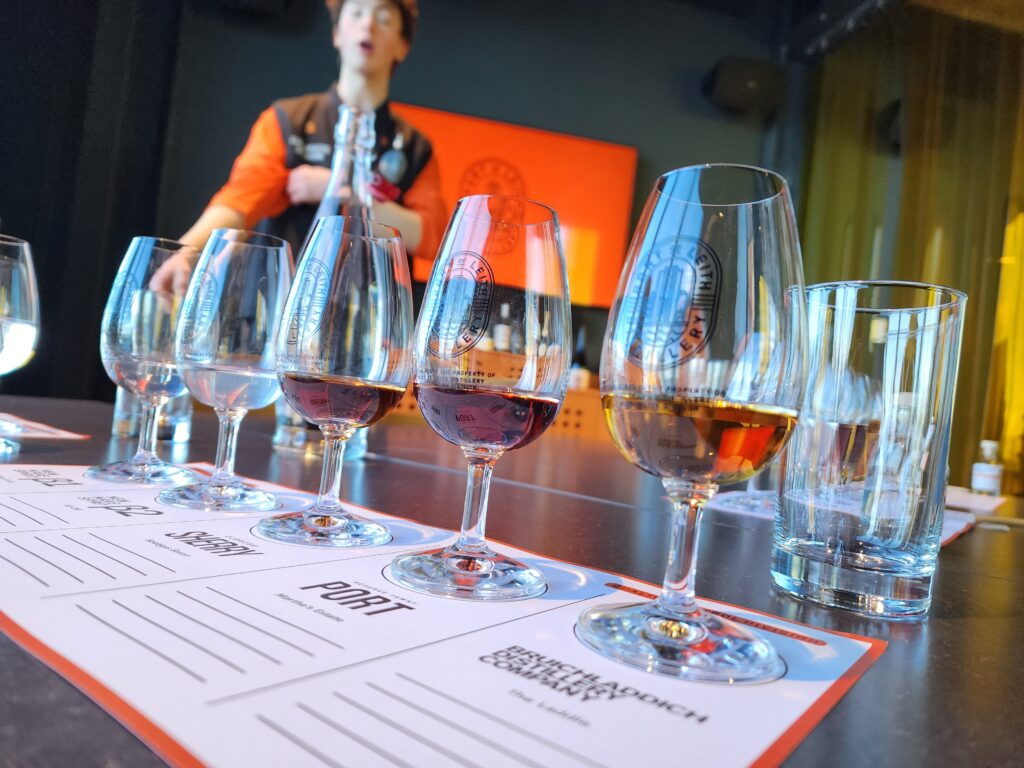
The distillery tour was like any other (like breweries and wineries, if you’ve seen one you’ve seen them all, you’re really just there for the last 20 minutes where you ideally taste the product) and it concluded with a tasting of the new make2 and a collection of ports and sherries from wineries Port of Leith has exclusive connections with.
The aging is what we show up for. It is why we pay the price and open the seal. We can watch the boiling, fermentation, and distilling, but that is the same just about anywhere you go. The flavor of legend comes about once the spirit can rest in the barrel. Wineries celebrate the year of the grape, sealing in the conditions that brought the bottle to life. Whisky celebrates how long the spirit is aged, with little focus on the year it was distilled. If you buy an 18-year Maccallan in 2022, it should taste the same as the bottle of 18-year Maccallan you purchase in 2023. Considering the variables at play (all brewing and distilling is, after all, a giant science project. A vast majority of the variables need to be controllable, and controlled, for it to work especially if you are tasked with creating millions of gallons of the stuff in a year – it all needs to turn out the same or the market may turn sour on you), and what can happen in a barrel over three years (not to mention the years of aging wines that happened before the whisky showed up) I find it baffling there isn’t more variety in whisky from one batch to the next.
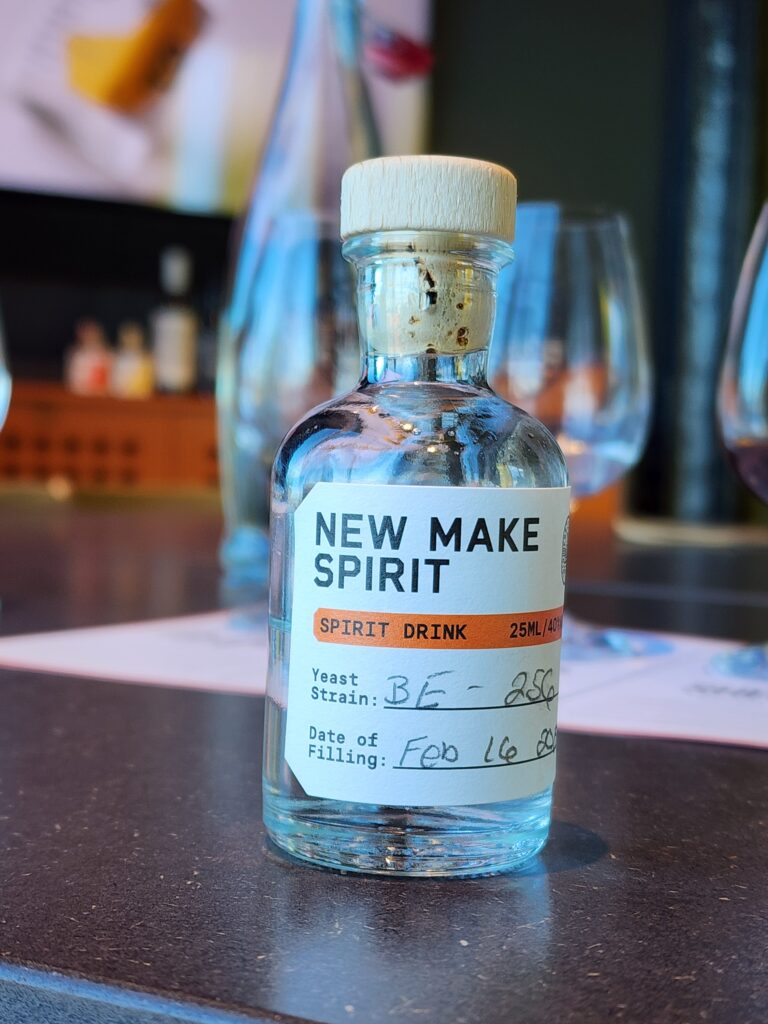
Keeping this “variety” at bay is why a lot of Scotch whisky producers will deal exclusively with wineries from all over the world for their barrels. Same grape, same region, same flavors. The other option is to source barrels through a broker – and who knows what you could get?3
Worth noting: Table Whisky. While Port of Leith did not have any single malts to sample, they had developed a blend of what they aimed to be “an approachable whisky.” The distilled compatriot to the Thursday night table wines, it is an easy drinker. It is one of the many products under the “Leith Export Co.” – a star in the constellation of brands owned by Muckle Brig that keep the distillery funded and in operation.
Glen Ord
A few days later a gentleman named Hugh is driving us through he hills around Inverness. This is not a distillery crawl, but a tour of the historic locations and events featured in the series of Outlander books and TV shows. Loch Ness, Urquhart Castle, Culloden, and ancient cairns. The day is wet, breezy, but the crowds are minimal and we mostly have everything to ourselves. Hugh does not have a Scottish scowl, nor does he sneak cigarettes while we explore the ruins, but he does have an extensive appreciation of Scotch and scores points with me for arranging a mid-tour lunch at Glen Ord.
Glen Ord is frequently at the top of numerous “best distilleries in the world” lists and produce the frequently awarded 12, 15, and 18-year single malt Singleton of Glen Ord. Frankly, I can’t help but agree. The tasting room, recently remodeled, is outstandingly gorgeous and even through my congested sinuses I can feel the story behind the 18-year malt. I promise you this, reader, once the head clears I will dig into the 12-year I smuggled home in my suitcase and give a full report. And you may have to trust me on how it goes down, because outside of the Glen Ord tasting room and Singapore, you will be hard pressed to find Singleton anywhere – a fact that blows my mind.
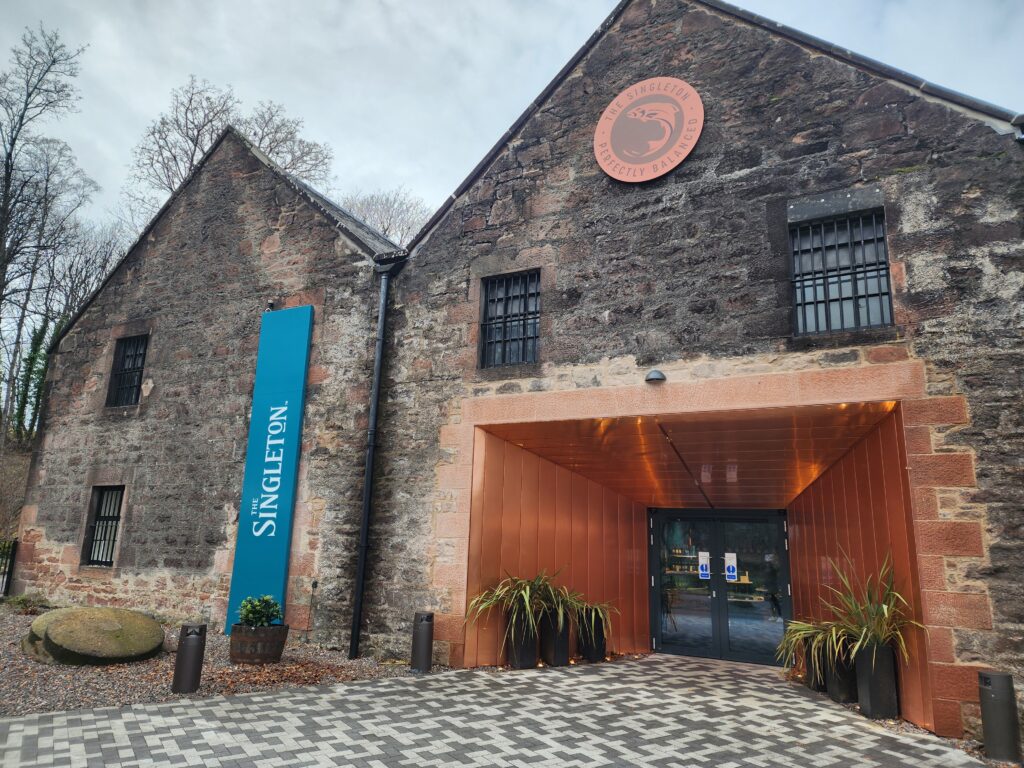
Even with Diageo’s4 recent reinvestment into Glen Ord’s tasting room and distillery – 25 million pounds for new stills, warehousing, and bottling lines – you would think there is Singleton left for the rest of us. But no, the markets in Southeast Asia absorbed they glut of new product. Some would even argue that Singleton was developed and produced specifically FOR this market. It’s not a bad pull, even with Diageo’s international reach, pushing a challenging product like Singleton to a billion-strong population does wonders for the Scottish economy.
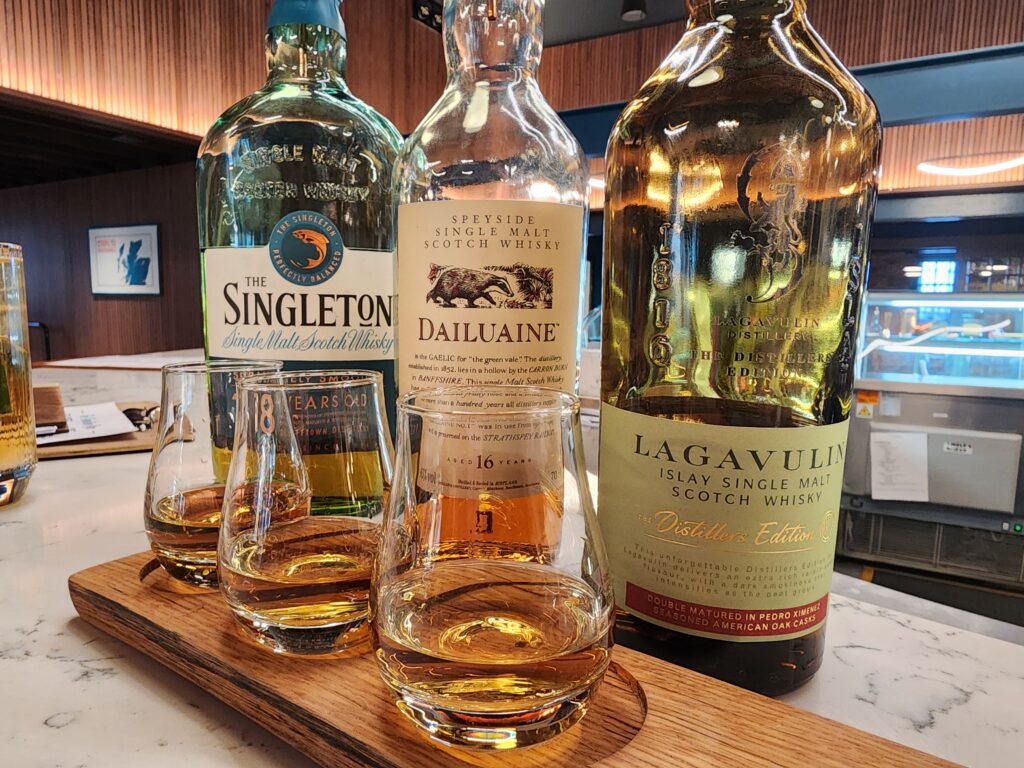
The rise in the new Asian middle class – largely younger professionals, unwed – whisky is massively popular in Singapore, China, and Japan. In every tasting room and whisky bar we visit in Scotland there are a handful of tourists from Asia absorbing themselves in Scotch – tasting from the top shelf, taking extensive notes and photos, and having more fun than anyone else in the room. It’s not a huge leap to connect the British Isles with Asia. The sun never set on the old British Empire and their colonization through the various trading companies. Over the centuries, this led to an Asian diaspora throughout the UK. It wasn’t uncommon to see immigrant house staff in the great halls of English estates. Today, there is some kind of Indian food restaurant or curry house on every other corner in the major cities. Not to mention: Humza Yousaf – the First Minister of Scotland – is of Pakistani descent.
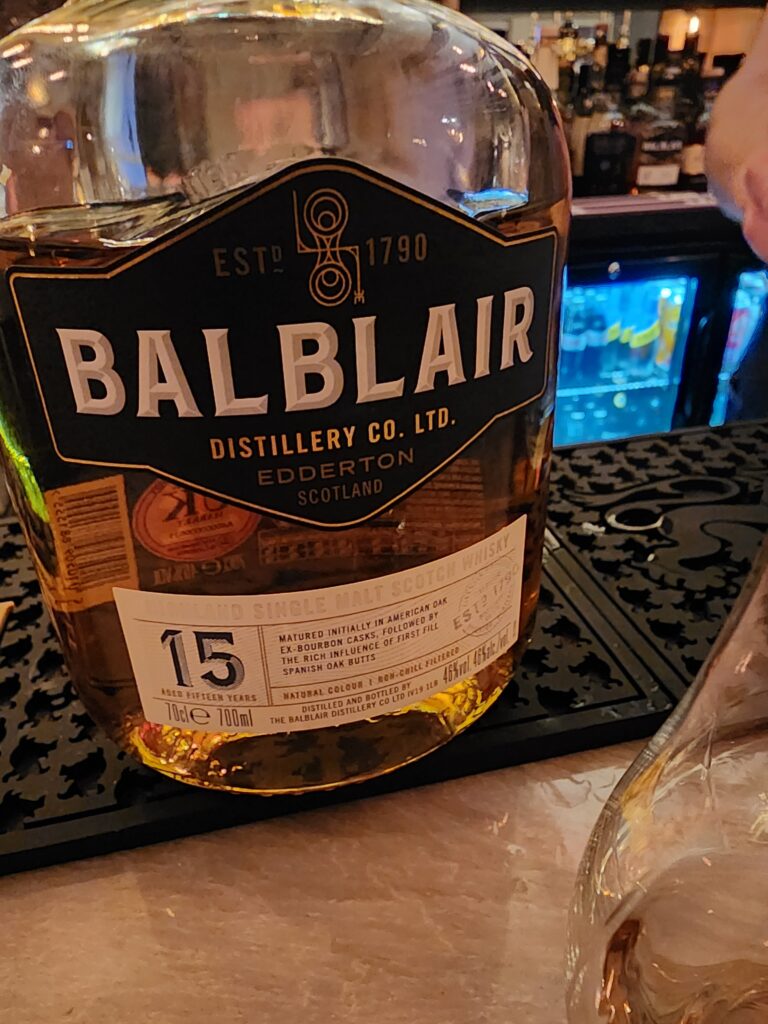


Above all, and this is my own thinking going wild, Scotch is challenging. It may not have meant to be that way, but it is by far the most pungent thing you will taste while in Scotland. Popular Scottish food is famously bland – Fish and Chips, Steak & Ale pie, mushy peas5 – and then there is scotch whisky, a total 180 – as if it were the only thing that reminds you there is still a life worth living beyond the blandness. To blow my own horn, going out of your way to fully appreciate something so complicated is a mixed signal of elitism and masochism – this is wonderful, you wouldn’t understand, it hurts like hell.
The Marine Hotel
The last day of touring and we have two goals before we begin our journey home. See the Dunnottar Castle and load up on bottles of Scotch to sneak home in our luggage.
We take the train south from Aberdeen, where we are staying in the BrewDog Kennels (a novelty hotel upstairs from the Castle Gate BrewDog taproom. It is as fun as it is dumb (the BrewDog commitment to sustainability, as noble as it is, extends to the point where the toilet paper supplied in our bathroom is that recycled brown paper nonsense you might remember from your middle-school science lab) to the coastal fishing village of Stonehaven. It’s a mile walk from the trains station to the center of town and with every step we are blasted by the winds howling off the North Sea and slowly soaked by the light rain. We step into a pub for a moment to get our bearings. Inside, a young man is pouring draughts for a handful of pensioners who are starting their Wednesday morning by getting pissed on ales. Borrowing their Wi-Fi, we discover the castle, in any official capacity, has closed for the weather.
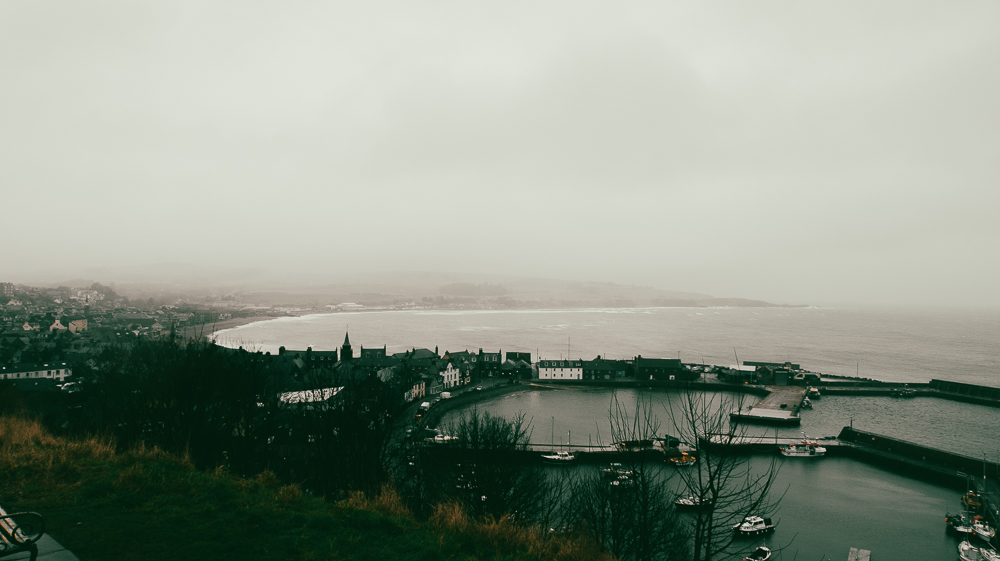
A castle, which stood as a fortress on the sea for centuries, closes because it’s windy. I could just imagine tourists losing their footing on the slick rocks and muddy trails, only to be blown off the cliffs and into the sea. What a liability! Of course they’d close the front gates of the visitor center. Of course we’d find a trail that goes in the back way. This is what we had prepared for, months of paychecks being traded for boots and a jacket I can only describe as “bombproof” in testament to their sturdiness! We finish our pints and rezip the jackets. The rain had let up, but the wind made itself more present. We follow the soaked trail for a mile and a half across exposed farmland that abuts the cliffs that fall away to the rocky shore below. The surf is rough, but the vistas are pristine.
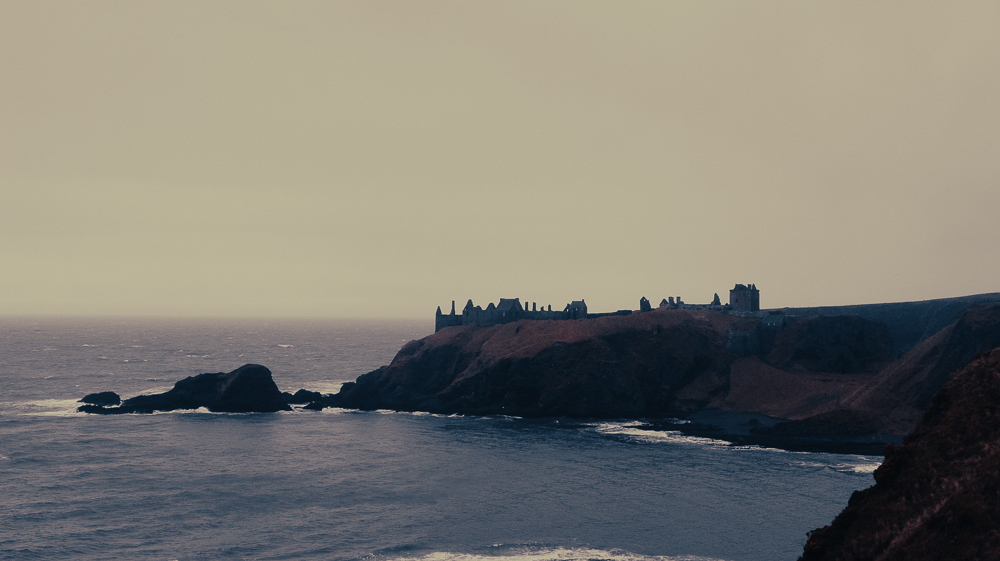
Here, cliffside, is not what tourists do. This is where stupid people go.
We make it to the nearest overlook, across a harbor from Dunnottar, and take in the castle while the wind bends us sideways. The ruins hug the hillside that slowly erodes into the surf. It is ruined. It is wet.
In town we take up to barstools at the Marine Hotel, in the bar on the ground level. It is empty save for a few guests who are riding out the weather with a few bottles of wine. The bartender here, Daniel, loves to talk. As we’re the only ones at the bar we’re the focus of everything he’d love to share. Adjacent to a brewery (as every hotel here seems to be, apparently), the Marine Hotel has a tight tap list that they compliment with an effort to keep a bottle of whisky from every distillery in Scotland. I’ll never know if they’ve accomplished this, but Daniel has no problem serving up their collection in 35 mL drams.
I do what I can to take notes, grab pictures, assess what I am tasting. Ahead of us still is the bottle shop where I want to bring home the right whisky to share. Still, it is worthless. My head cold is further complicated by our hike along the seaside vortex and at this point I am drinking purely to eliminate the cold and prepare myself for the journey back to the Kennels. Aberdeen is a mile walk, a twenty-minute train ride, and then another mile walk to the whisky retailer that closes at 6 PM.
But that’s all fine. It’s not like there is any hurry. Whisky, after all, spends most of its time sitting around waiting.
- My entire time in the UK, I will never get over the reduced drinking age. In every city with a university were also kids, literal children, out on their ass with drink. There was also a very good chance that the person making your drink was 19 and equally confused and overwhelmed at what went into a Dark and Stormy ↩︎
- The alcohol, pre-aged right off the still, what American’s know as “white dog” ↩︎
- And maybe that variety is a market unto itself? ↩︎
- Just like countless beverage brands in the region, Glen Ord is owned by Diageo – the multi-national mega-conglomerate behind Johnnie Walker, Tanqueray Gin, Smirnoff Whiskey, Guinness, Bulleit Whiskey, Crown Royal, Casa Migos Tequila, Aviation Gin, and about 90% of the mid-level shelf behind the bartender at your local Chili’s. Also, it is hilarious to hear a Scot pronounce “Diageo.” ↩︎
- I have an entire 3000 words ready to fly on the abomination that is mushy peas. Coming soon to a rant-fest near you. ↩︎




